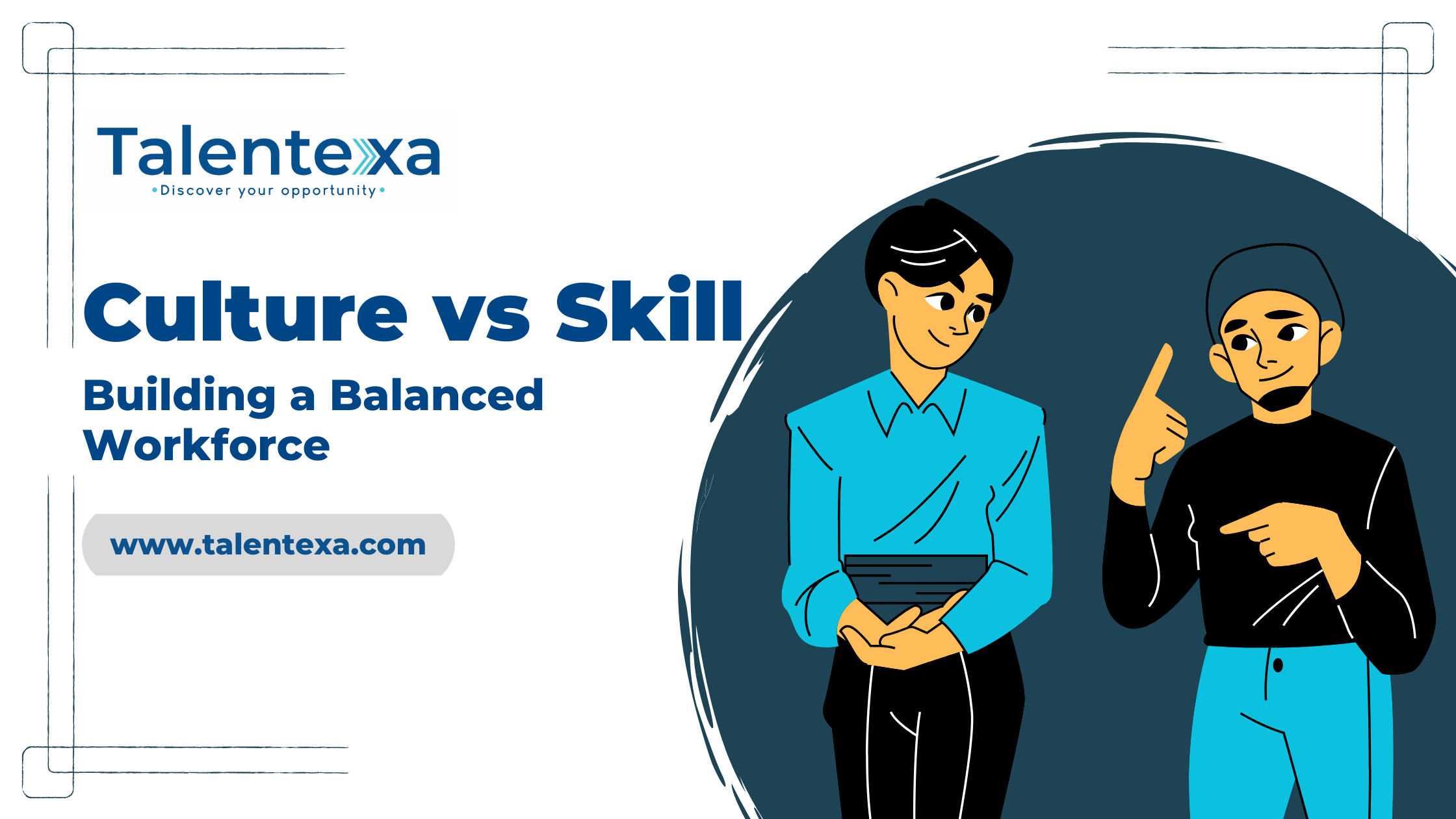Recruitment is more than just about finding the right skills. Companies are increasingly recognizing the importance of cultural fit, where the alignment of a candidate’s values and behaviors with those of the organization can significantly impact success and retention.
What does it mean to prioritize cultural fit over skill fit? And how should companies strike the right balance between the two?
What is skill fitment?
When we talk about skill fit, we are referring to a candidate’s ability to perform the tasks required for the job based on their education, experience, and technical expertise. Skill fit is straightforward to assess—it can be measured by looking at past job performance, technical certifications, and tangible outcomes in previous roles.
Hiring for skill fit is crucial for positions requiring specialized knowledge. In these cases, not having the right skills could mean a significant delay in project timelines or, worse, potential failures in execution. For roles like software engineering, data analysis, or accounting, skill sets cannot be compromised. But does hiring only based on skill create long-term success?
What is cultural fitment?
Cultural fit refers to how well a candidate aligns with the core values, work environment, and long-term vision of the organization. Cultural fit impacts how well an individual will work with existing team members, their commitment to the organization’s mission, and how adaptable they are to company norms.
Hiring for cultural fit is especially important in maintaining a cohesive team dynamic, ensuring employee engagement, and lowering turnover rates. An employee who resonates with the company’s culture is likely to be more motivated, satisfied, and dedicated to the job. However, prioritizing cultural fit without considering technical competence may lead to poor performance and skill gaps.
Advantages and Disadvantages of prioritizing each:
Skill Fit Pros:
- Immediate contribution to the job.
- Ensures technical proficiency.
- Shortens the onboarding and training process.
Skill Fit Cons:
- A highly skilled candidate might not integrate well with the team.
- A lack of alignment with company values can lead to disengagement or a toxic environment.
- Skill gaps can be learned, but cultural dissonance is harder to fix.
Cultural Fit Pros:
- Leads to better long-term retention and employee satisfaction.
- Helps build strong, aligned teams.
- Supports a positive work environment and contributes to a unified company culture.
Cultural Fit Cons:
- Risks ignoring essential skills and technical expertise.
- Can potentially lead to a homogenous workforce if diversity is neglected.
- Longer training and development may be needed for candidates who lack the right skills.
Striking the balance
So, how do we balance recruiting for cultural fit with recruiting for skill fit? The key is to approach hiring with a holistic mindset. Companies should define their core values and communicate them clearly throughout the recruitment process. At the same time, they should not compromise on essential skills required for the role.
- Tailored job descriptions: Be transparent about both the skills and cultural aspects of the job. If a candidate excels in one but has the potential to grow in the other, a more flexible approach can be taken.
- Behavioral interviews: Ask questions that assess not only technical skills but also how the candidate would handle situations that are in line with the company’s values and culture. This gives insight into both skill and cultural fit.
- Upskilling opportunities: For candidates with strong cultural fit but slight gaps in technical ability, offering training and mentorship can bridge those gaps. This investment often leads to a more committed and loyal employee.
- Inclusive hiring practices: Avoid the trap of hiring for cultural fit in a way that leads to a lack of diversity. It’s important to bring in different perspectives and backgrounds, even if it challenges the status quo.
Conclusion:
In the end, recruiting for cultural fit vs. skill fit is not an either/or proposition, it’s about finding a balance. Successful hiring strategies ensure that while technical skills are prioritized, the importance of cultural alignment is never overlooked. Ultimately, the most valuable employees are those who not only perform well but also thrive in and contribute to the company’s unique culture.
Finding the right talent is the key to unlocking your company’s full potential. Don’t settle for less when you can have the best. At Talentexa, we specialize in connecting you with top-tier professionals who align perfectly with your company’s vision and goals.
Take the first step towards building a stronger team. Contact us today to discover how we can help you hire the right people who drive results!
Contact us today to discover how we can help you hire the right people who drive results! Schedule a free consultation now and let’s create a tailored hiring strategy that works for you.
Schedule a free consultation now and let’s create a tailored hiring strategy that works for you.
Your perfect hire is just a click away. Don’t miss out!
Hire Talent: https://talentexa.com/hire-candidates/
Apply for Job: https://talentexa.com/job-seeker-apply/
OR
Connect with us directly:
Email: info@talentexa.com
Website: www.talentexa.com


